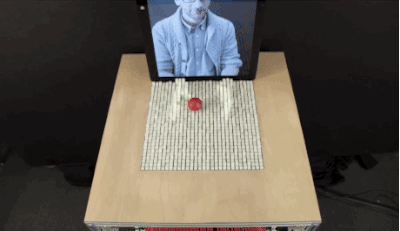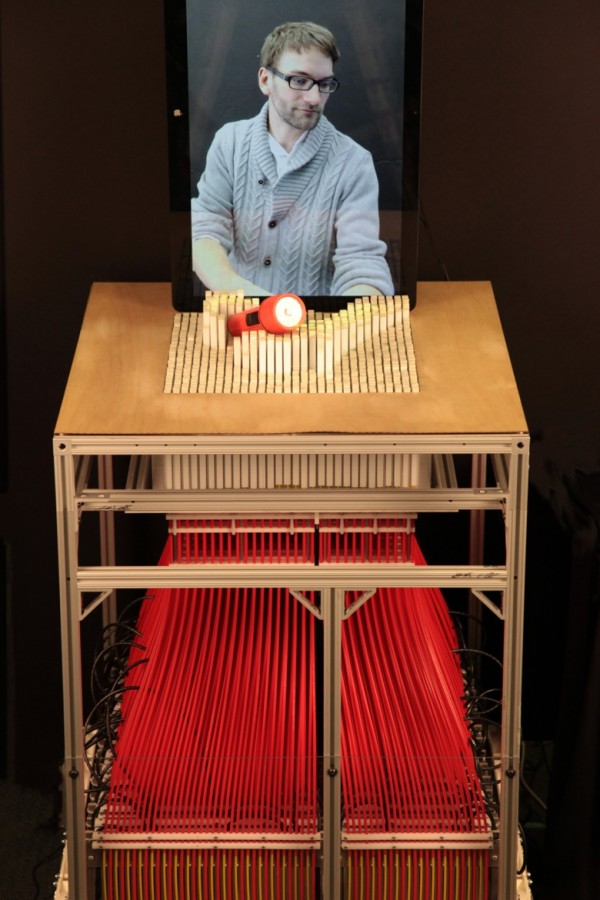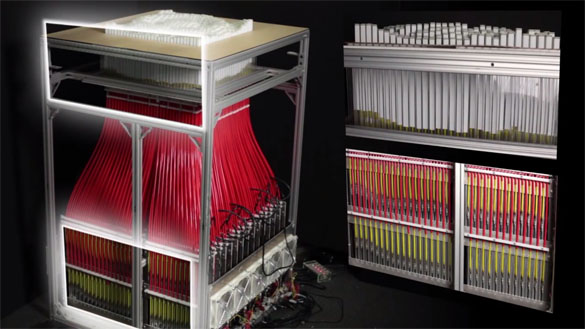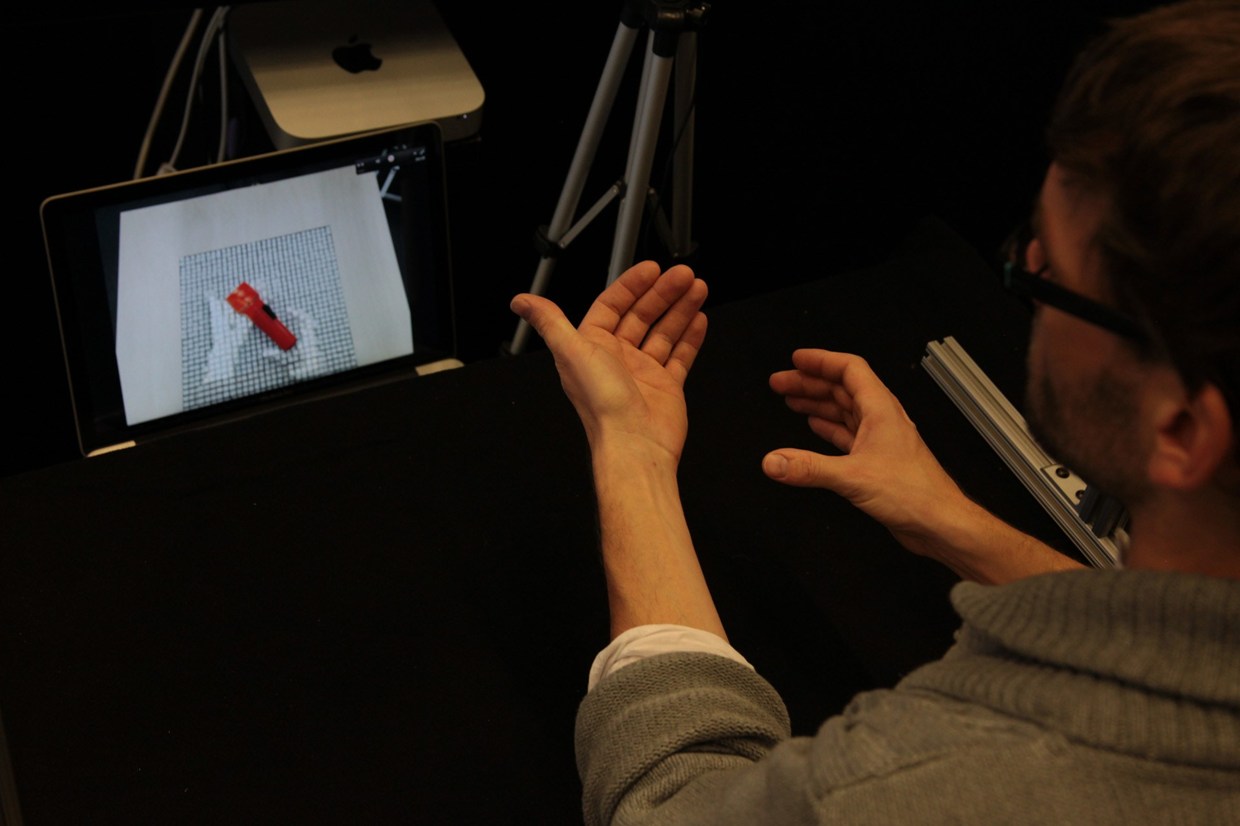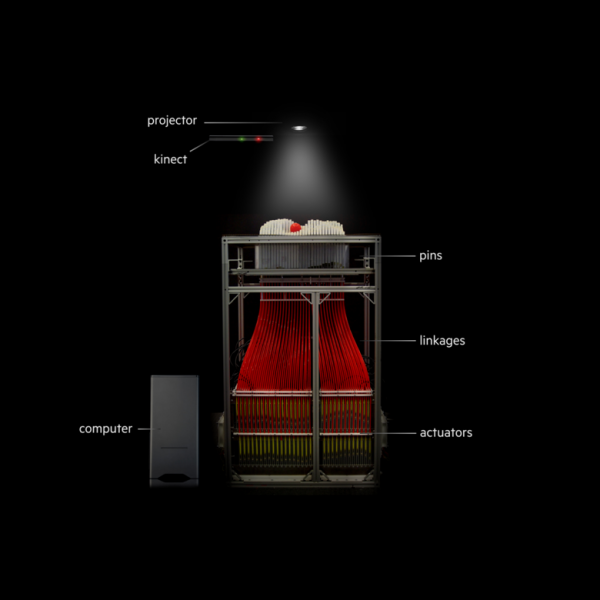[VIDEO] If You've Ever Wanted To Be In Two Places At Once Or Make LDR More Bearable...
A research team from MIT's Tangible Media Group has developed InForm, a dynamic shape display that can shape shift to render 3D content physically. The project rests comfortably between graphical user interfaces and tactile user interfaces, as it envisions a future where people might shake hands with the person they're video chatting with.
MIT has come up with an amazing computer interface that, as the video above shows, allows a user to move objects from afar
The InForm is a dynamic shape display from MIT's Tangible Media Group. It turns 3D data into crude, physical representations in real time.
 dvice.com
dvice.com
Using a Kinect motion sensor, it can scan bodily movements and recreate them on a table of physical "pixels," allowing you to manipulate objects on the other end. A user could even "hold hands with a person hundreds of miles away."
cnet.comMIT says the surface is made up of 900 motorized, polystyrene pins that can extend about 4 inches from the surface. Here's how it works
Created by Daniel Leithinger and Sean Follmer and overseen by Professor Hiroshi Ishii, the technology behind the inFORM isn't that hard to understand.
In many ways, it works like one of those executive pin toys that allow the user to imprint shapes onto a surface made out of hundreds of pins. Each pin can be moved up and down individually by actuators to create a topographical rendering of an object -- it might be a city plan, a data visualisation or simply the outline of someone's hands.
The grid is powered by an elaborate system of computer-controlled linkages and actuators under the table. Meanwhile, an overhead Kinect and projector deliver data on user motion into the system while casting visual feedback onto the table.
cnet.comAs simple as the display looks on the surface, it's not that simple under the hood.
Image via hothardware.comWhat’s exciting about this technology is the potential it holds for the future of interaction (and surely many applications we can’t foresee)
As an interface and display, InForm has potential applications ranging from education, 3D prototyping, and surgical simulations to urban planning, architecture, and map making.
visualnews.comOf course, there's also the ability to create a "telepresence" effect, or projecting your presence remotely through video or through hardware representation, such as a telepresence robot.
cnet.com"Remote participants in a video conference can be displayed physically, allowing for a strong sense of presence and the ability to interact physically at a distance," according to the MIT research group, led by Professor Hiroshi Ishii. The technology seems to have evolved from an MIT project titled Recompose.
hothardware.comThe group sees InForm as progress toward its Radical Atoms goal, which is to develop interactive materials that can dynamically change shape like pixels on a screen.
cnet.com